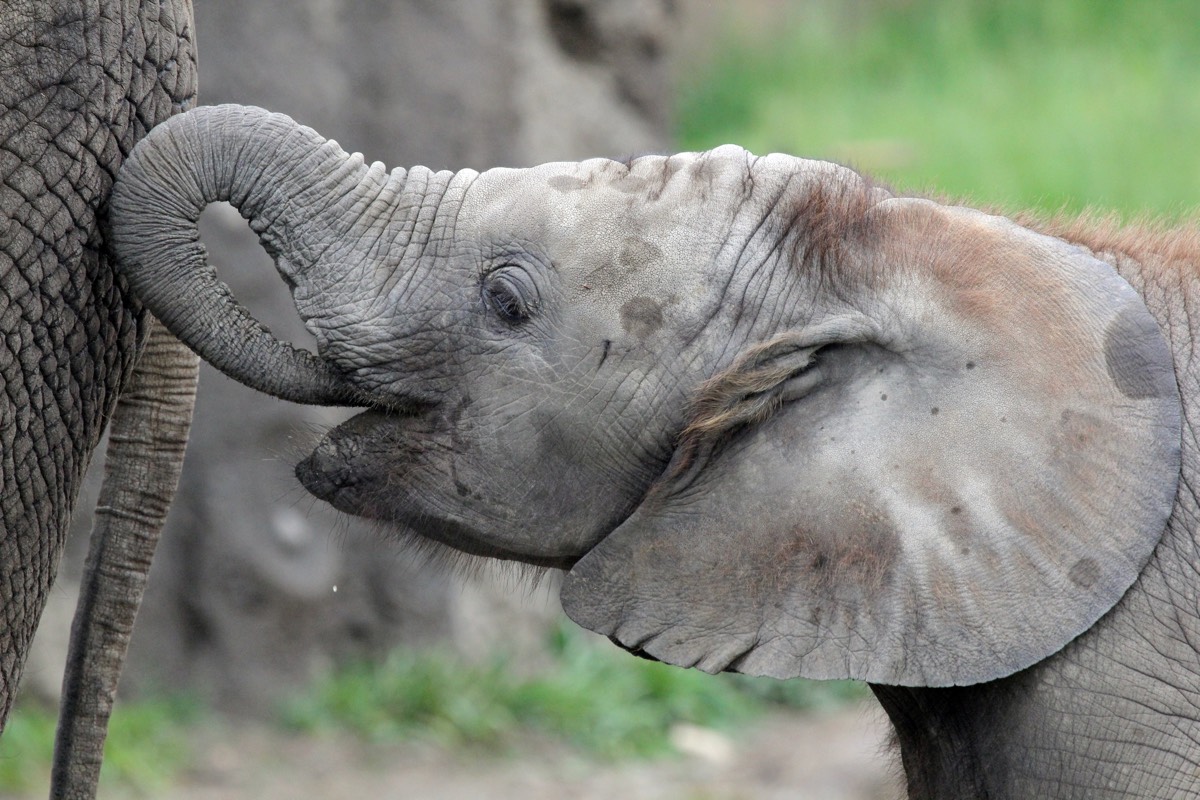Herpes Virus Kills 2nd Young Elephant at Indianapolis Zoo

Just a week after the death of their 6-year-old African elephant, Nyah, the Indianapolis Zoo delivered another sad message: Its other youngest African elephant, 8-year-old Kalina, died Tuesday (March 26).
Both African elephants (Loxodonta africana) may have died from elephant endotheliotropic herpes virus (EEHV), though zoo officials have yet to get all the needed tests back to confirm the diagnosis. On Saturday (March 23), Kalina displayed symptoms similar to those seen in Nyah. A few days prior to her death, Nyah showed signs of "abdominal discomfort," though she was still eating and drinking, the zoo reported on its Facebook page.
"We are devastated to announce that a second African elephant in our herd, Kalina, died earlier today," the zoo said on Facebook. [Elephant Images: Largest Land Animals]
Elephant herpes
EEHV, which comes in different strains, is responsible for half of the deaths of young elephants in zoos, according to the Smithsonian's National Zoo & Conservation Biology Institute.
Like other herpes viruses, EEHV can go into a dormant state inside its host, though scientists don't know where in an elephant's body EEHV hides out, according to the Smithsonian National Zoo. For whatever reason, the virus can come out of hiding and circulate through the bloodstream, causing bleeding and even death.
There is no vaccine for the virus and no telltale signs of it when it's in the inactive state, the zoo said. Scientists don't even know why the virus suddenly comes out of dormancy to aggressively infect a young elephant.
"Blood tests from both Kalina and Nyah showed high levels of EEHV," Judy Palermo, senior manager of Public Relations at the zoo, told Live Science. "Full necropsy results will not be in for several weeks, but they indicated multiple organ failures brought on by elephant endotheliotropic herpes virus."
Get the world’s most fascinating discoveries delivered straight to your inbox.
The virus is more common in Asian elephants (Elephas maximus). It seems to be tolerated by adult elephants but often fatal to juveniles of African and Asian elephants. These young elephants seem to be unable to mount an effective immune response to the virus, scientists reported in 2018 in the Journal of Virology.
"Most elephants are able to fight the virus and survive when it comes out of latency," the Smithsonian said. "Calves appear to be most susceptible to EEHV disease after they have been weaned, at a time when they are not protected by their mother's antibodies."
Hundreds of comments have poured in on the zoo's Facebook post about the death of Kalina, many expressing how much they'll miss the young elephant. While human zoo-goers may feel mournful, Kalina and Nyah's surviving herd members may be hit the hardest.
And the zoo made sure to acknowledge that.
"We know that elephants grieve the loss of a herd member. And it was important for each of our elephants to see and spend the time they needed with Kalina and Nyah after they died," the zoo said on Facebook. Both Kalina's mother Kubwa and Nyah's mother Ivory are still at the zoo, Palermo said.
- 15 of the Largest Animals of Their Kind on Earth
- 11 Animals Named After U.S. Presidents
- In Photos: Eerie Zoo Animal Skeletons, in X-Rays
Originally published on Live Science.
Jeanna Bryner is managing editor of Scientific American. Previously she was editor in chief of Live Science and, prior to that, an editor at Scholastic's Science World magazine. Bryner has an English degree from Salisbury University, a master's degree in biogeochemistry and environmental sciences from the University of Maryland and a graduate science journalism degree from New York University. She has worked as a biologist in Florida, where she monitored wetlands and did field surveys for endangered species, including the gorgeous Florida Scrub Jay. She also received an ocean sciences journalism fellowship from the Woods Hole Oceanographic Institution. She is a firm believer that science is for everyone and that just about everything can be viewed through the lens of science.


